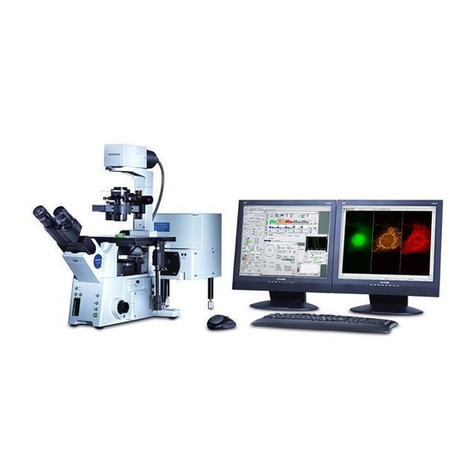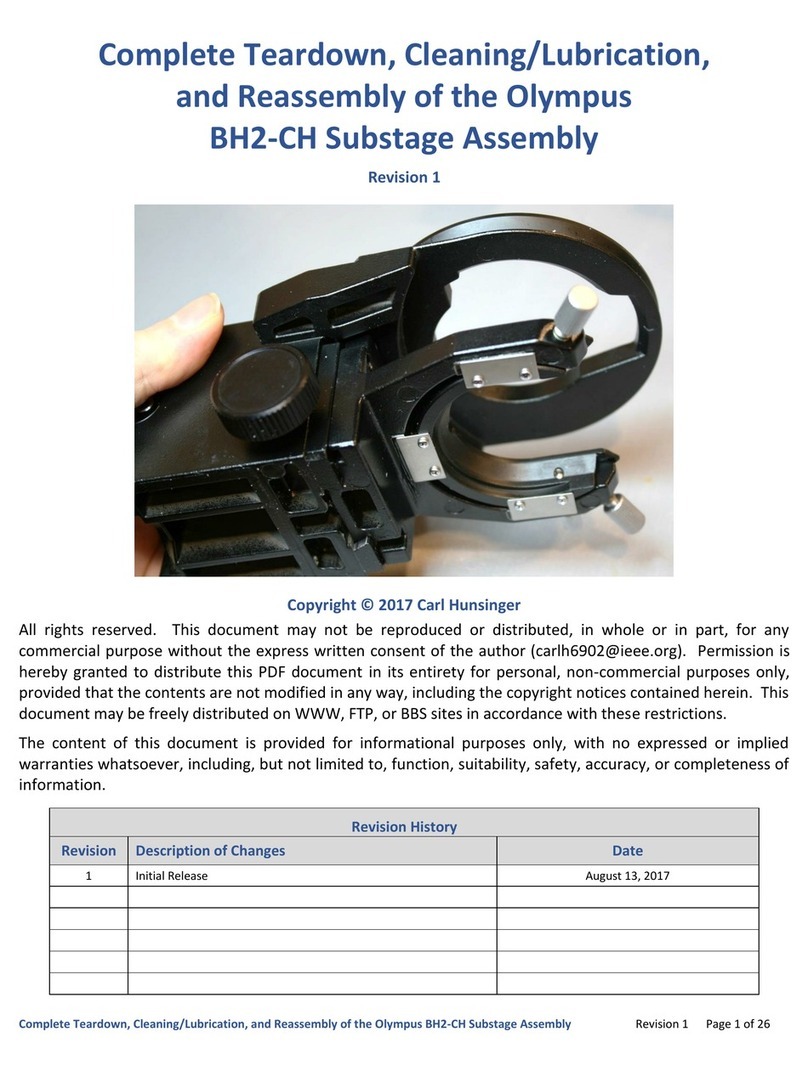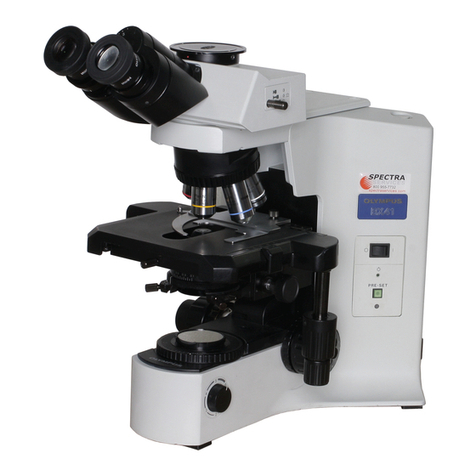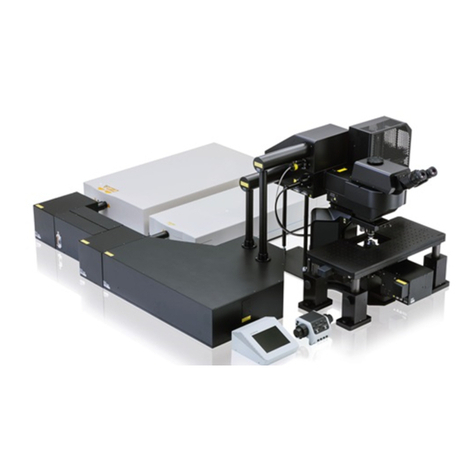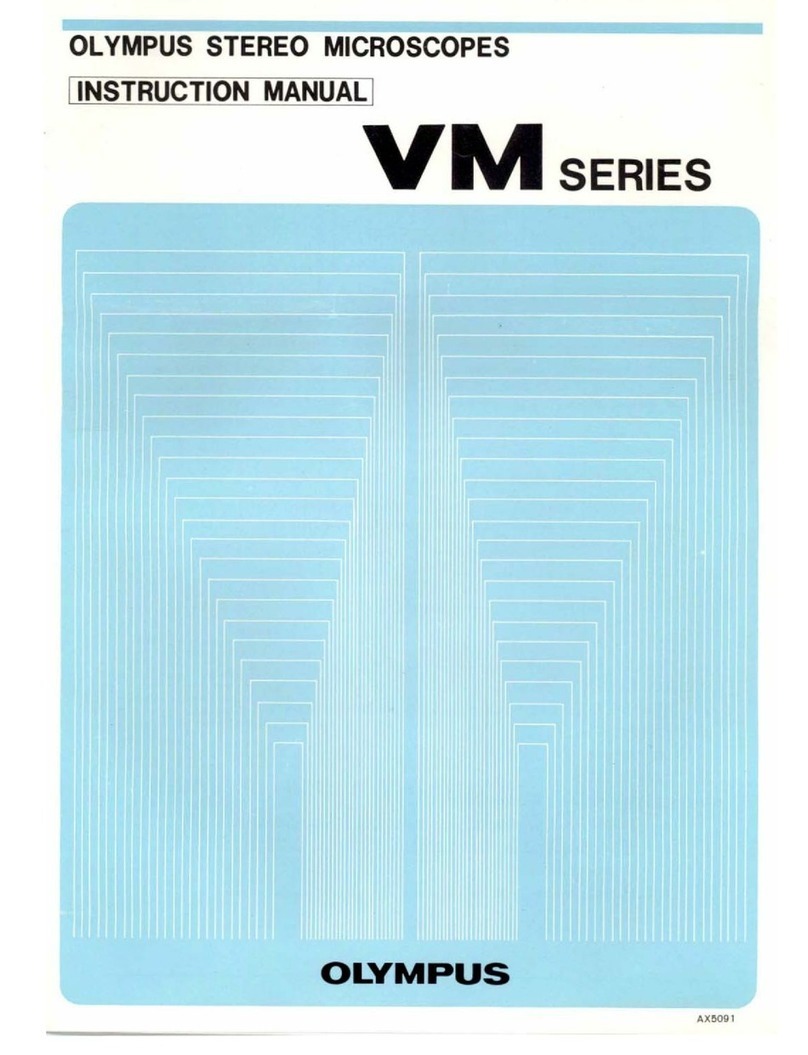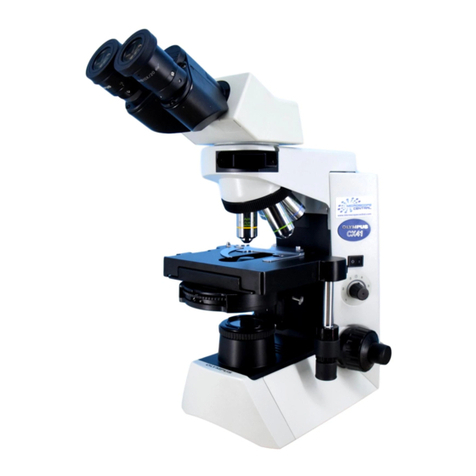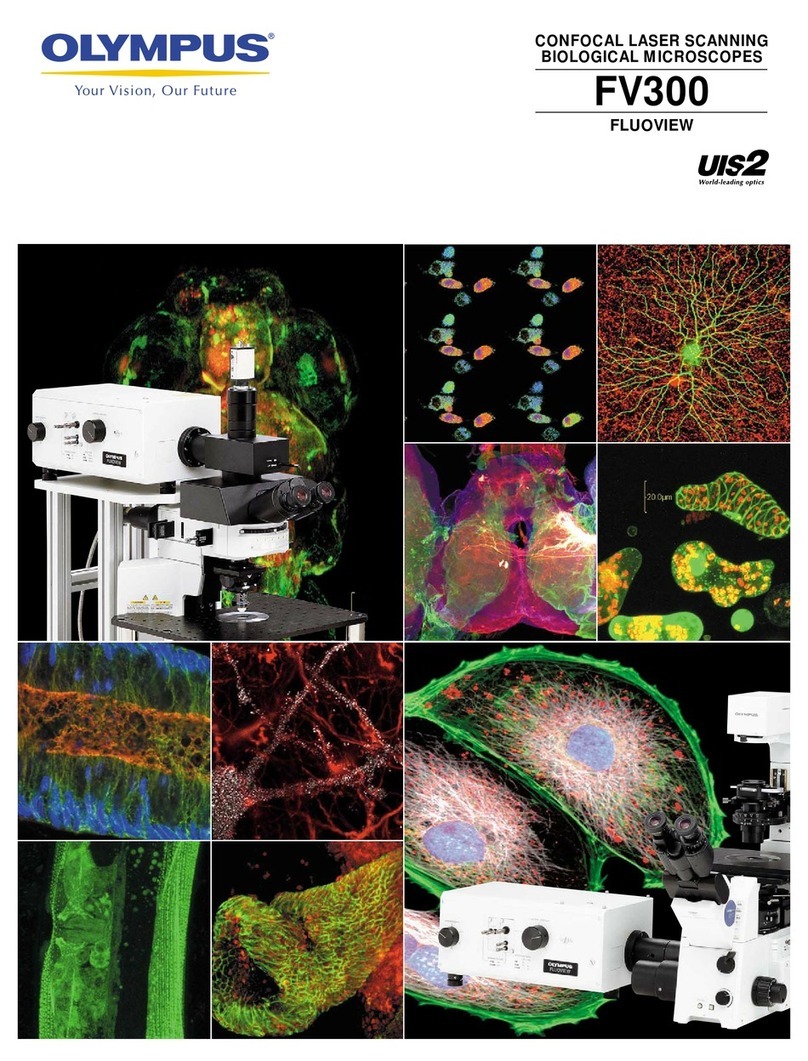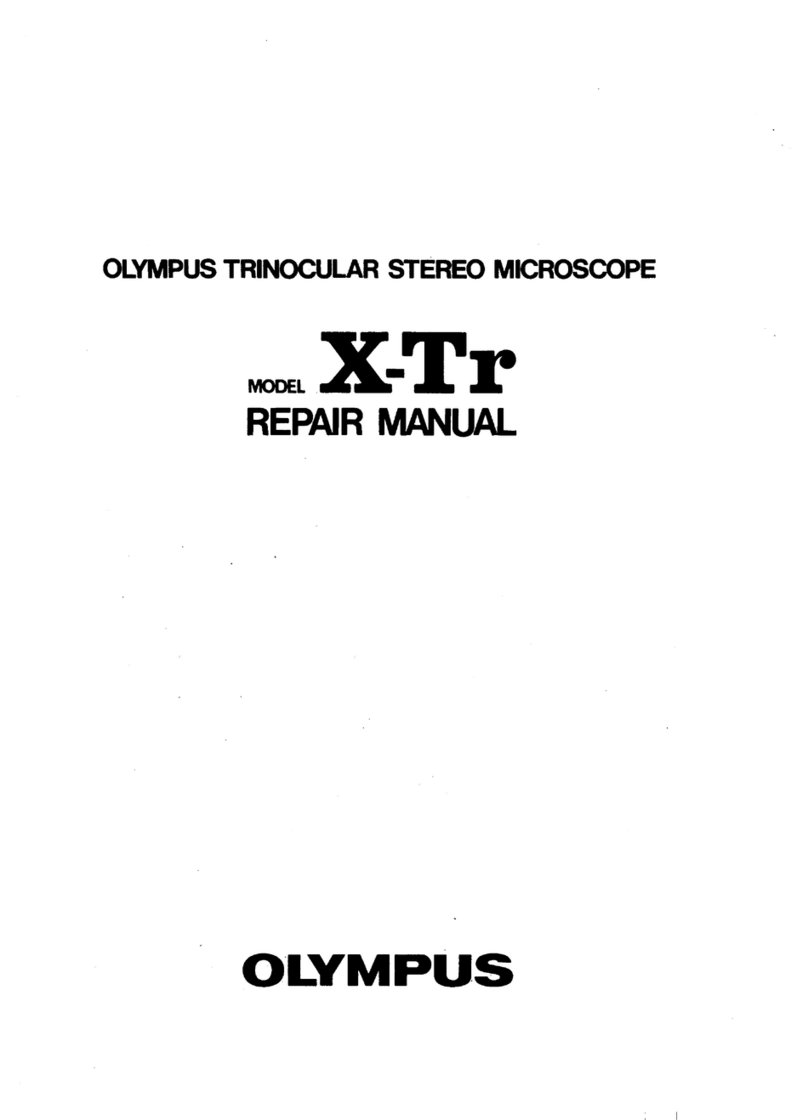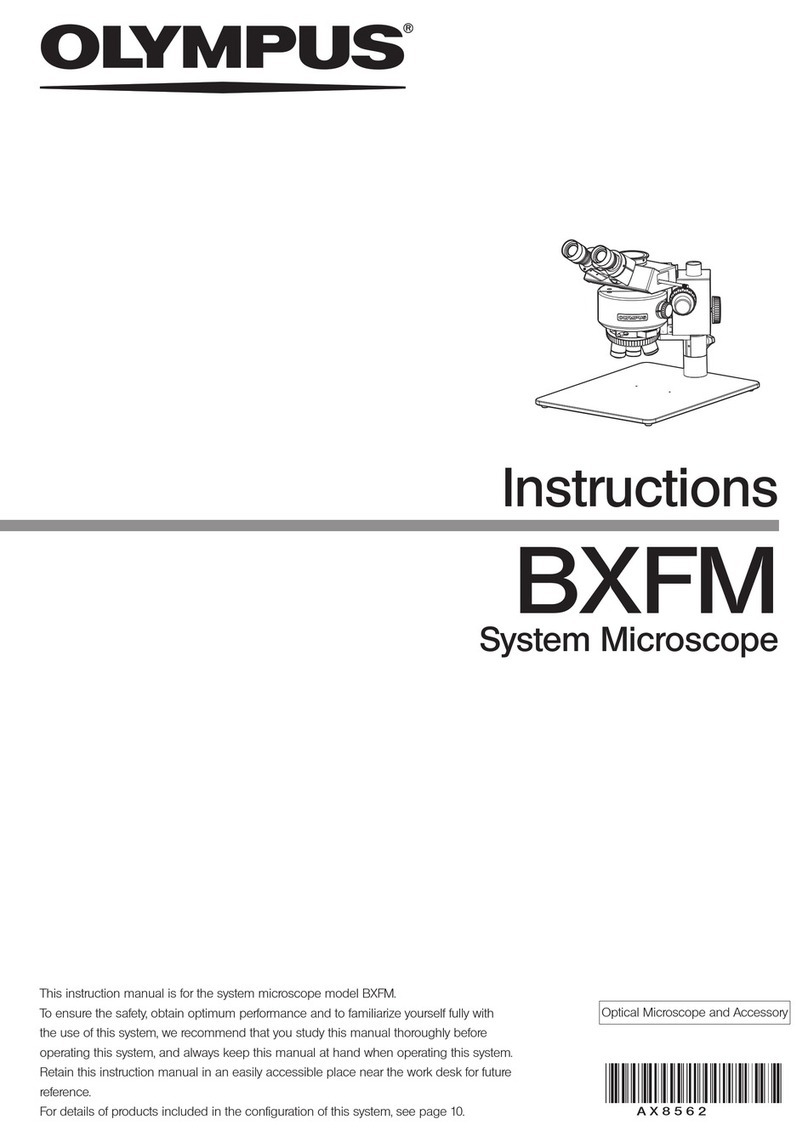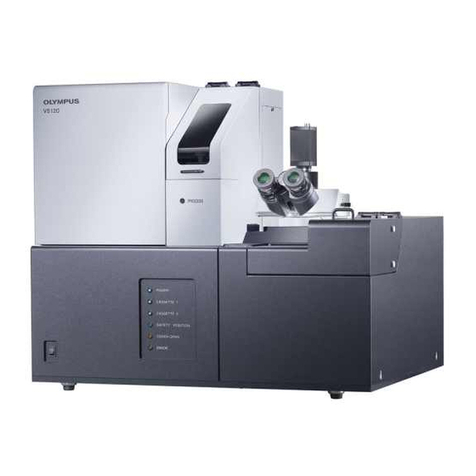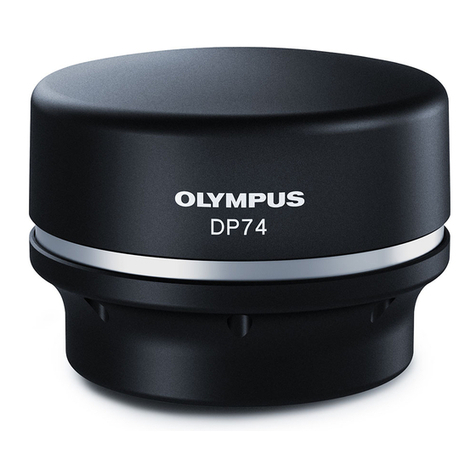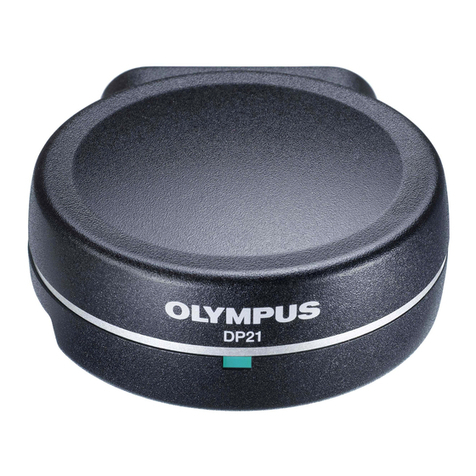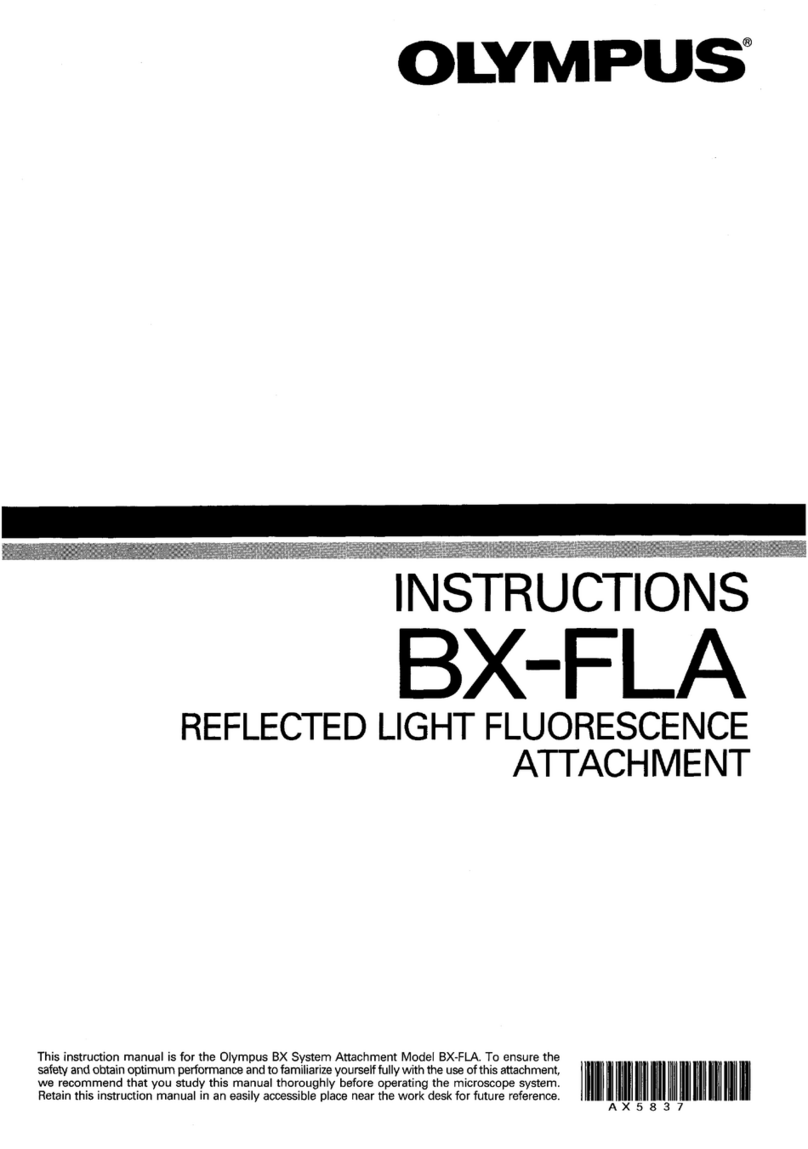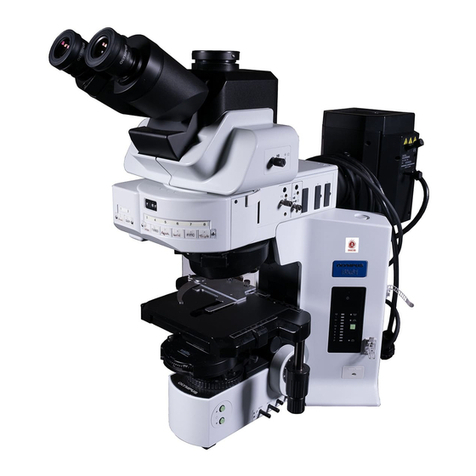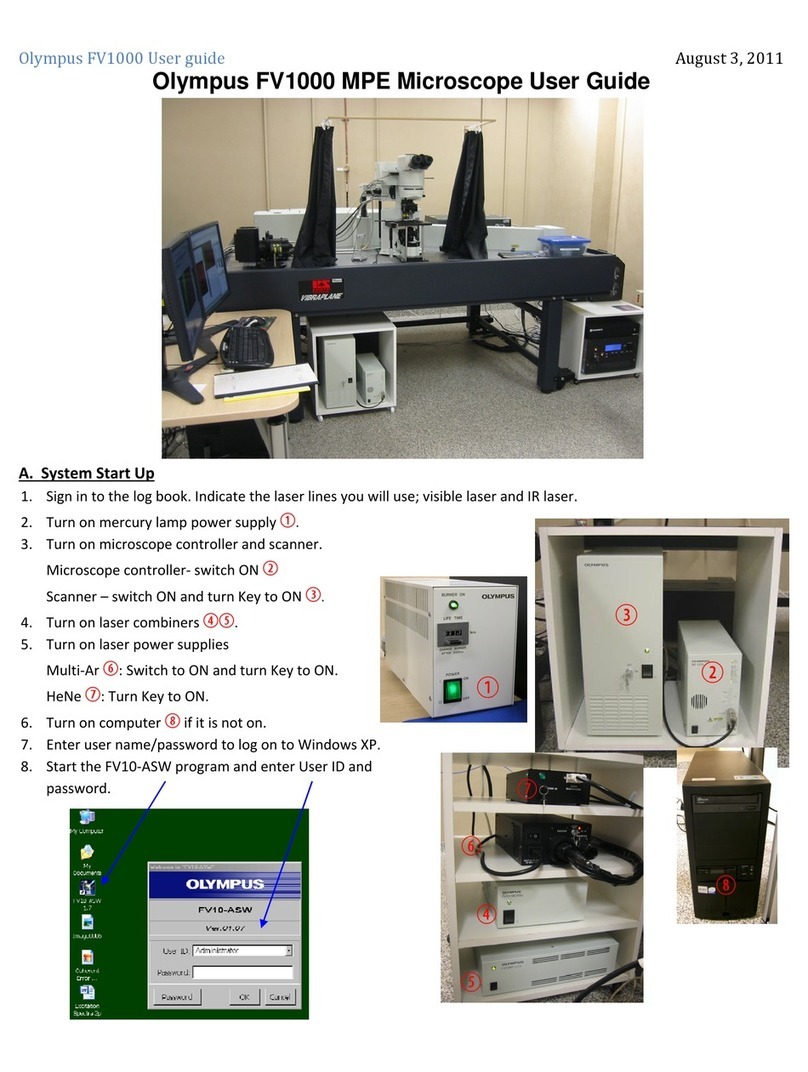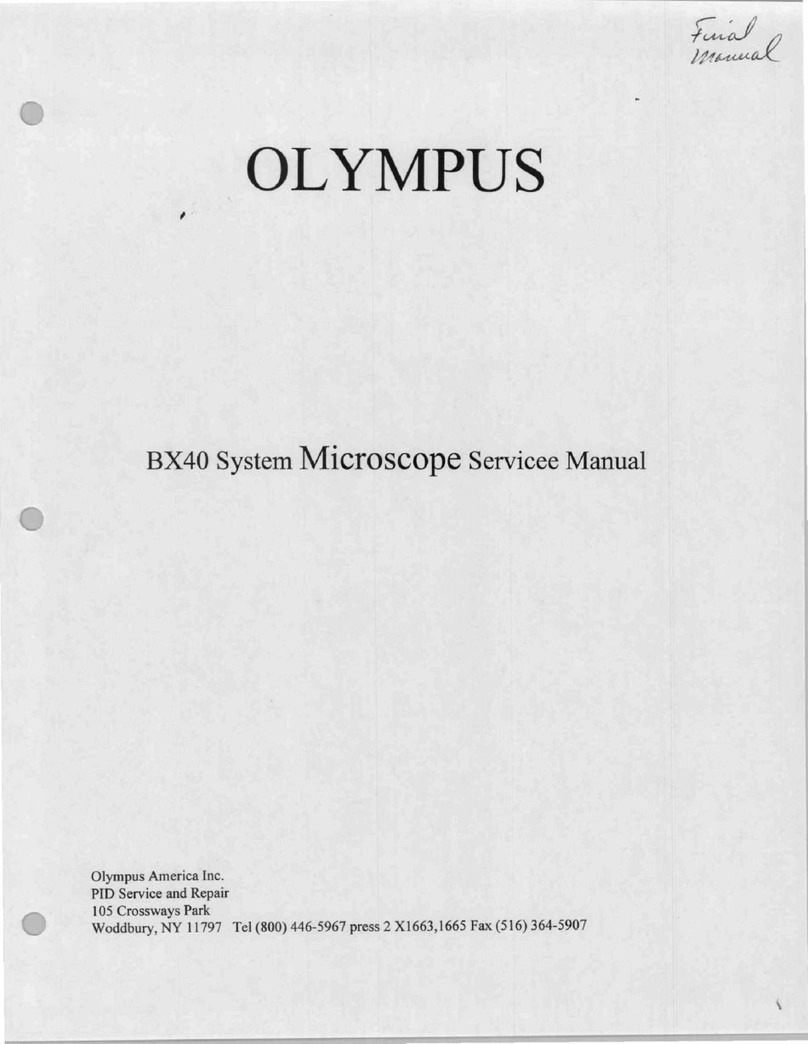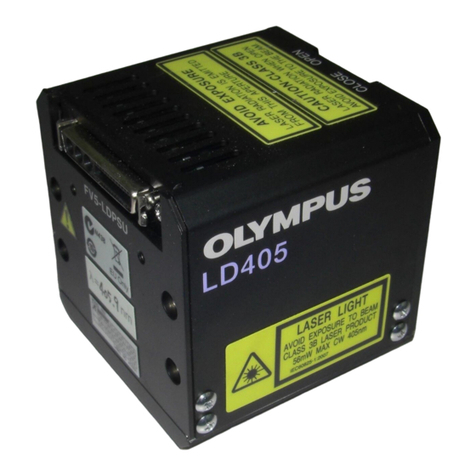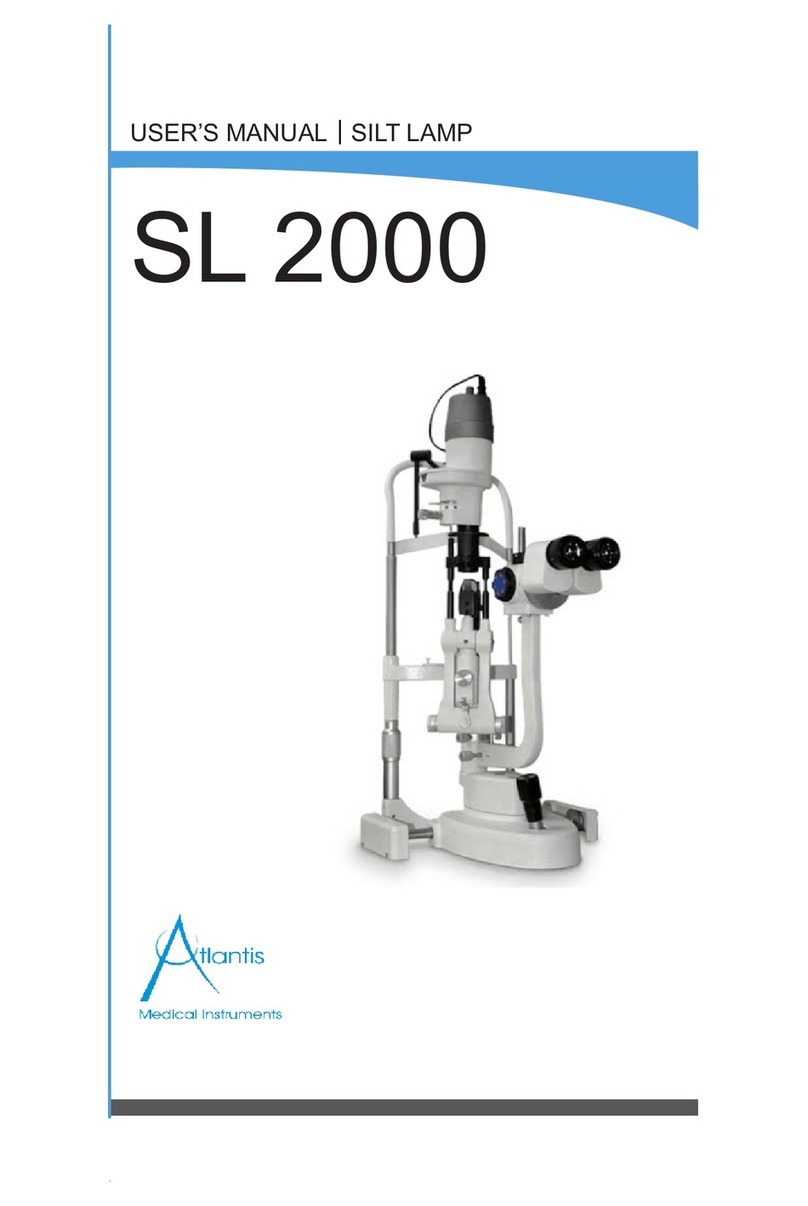
OBSERVATION METHODS
I. Standard
In principle, the polarizer, analyzer, test plate, and Bertrand lens should be slid out of the optical
path since they are not req1.iired for ordinary microscopic examinations. In most cases, however ,
the polarizer is left in the optical path.
II. Orthoscopic Examination
Strictly speaking, in orthoscopic examinations, only light parallel to the optical axis of the micro-
scope enters the field of view. In other words, only the parallel optical characteristics of the
specimen can be examined through orthoscopy. Since, however, parallel light not only lacks
brightness but also weakens the resolving power of the lenses, weak aperture lighting is almost,
always used by sliding the lower condenser lens into the optical path. For ideal results, weak ,
aperture objectives as the 4x and 10x type should be used. In this case, better results can be
obtained by adjusting the condenser iris to the aperture of the objectives. The centering screw
can be used to rotate the specimen so that it will come in line with the center of the view field.
When the polarizer and analyser are clicked into position at 00, the oscillation direction of each
coincides with the cross-line of the eyepiece-Iength,vise for the polarizer and widthwise for
the analyzer. This condition is called crossed Nicols.
When the analyzer is left out, the condition is called single Nicol or one Nicol. By using both
methods, the following characteristics can be examined: shape, size, and structure of the specimen,
refraction, double refraction, interference color, extinction angle, optical azimuth and optical poly-
chromism.
IJI. Conoscopic Examination
In conoscopic examinations, optical phenomena are studied by throwing light from all directions
-with the exception of parallel light-on the specimen. I
In other words, the specimen must be illuminated with circular beams. Therefore, the numerica~( ,
aperture is increased by sliding the lower condenser lens out of the optical path; furthermore,..
large aperturc 40x ohjective is used. By inserting a Bertrand lens after focusing on the specimen,
an interference image, or conoscopic image, can be observed on the real focal plane of the objective
lens. If a scaled eyepiece is used, the deflection of the interference fringe can be measured. The
interference image can also be observed directly through the tube without the aid of the Bertrand
lens and the oblective lens.
8
